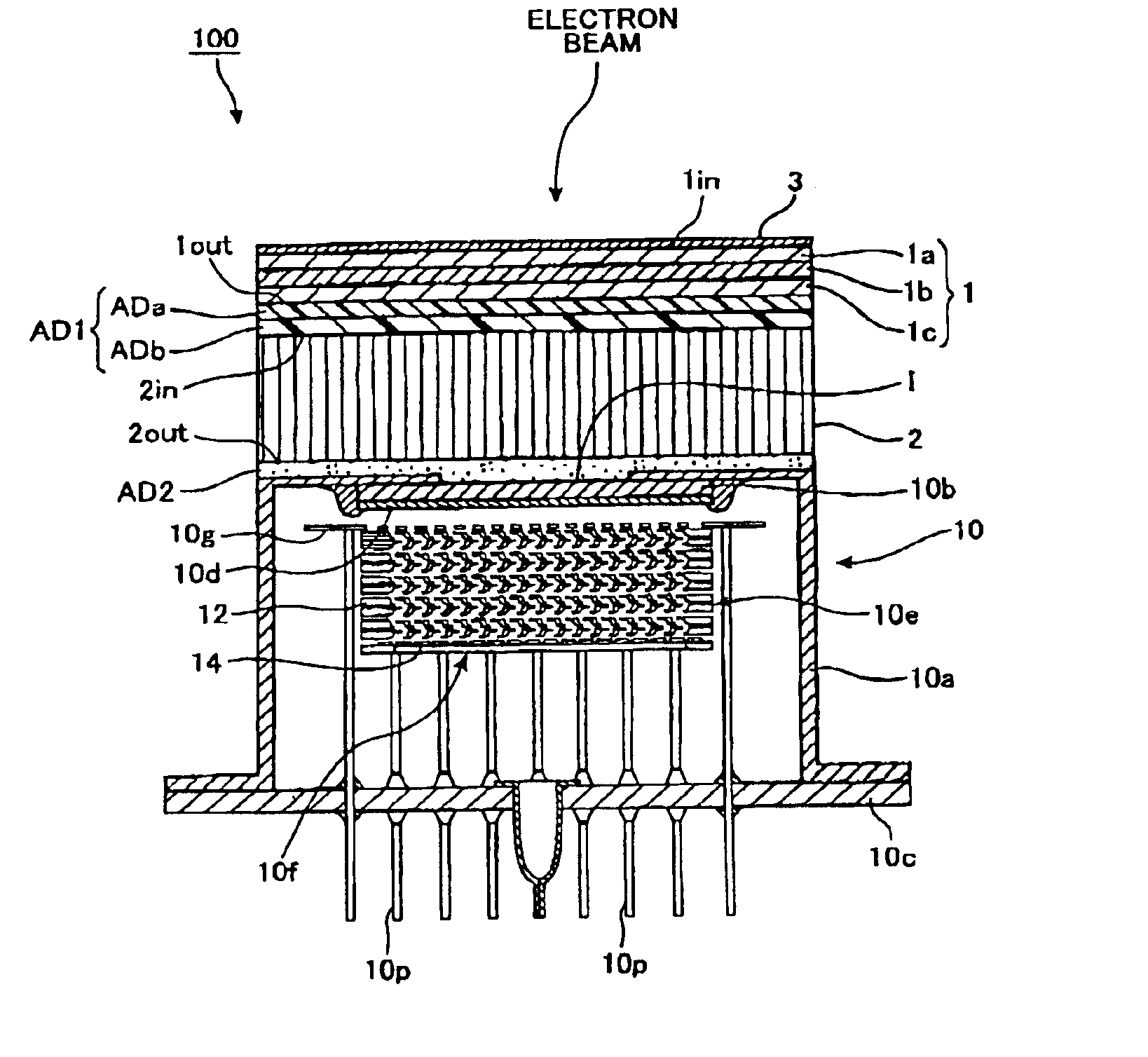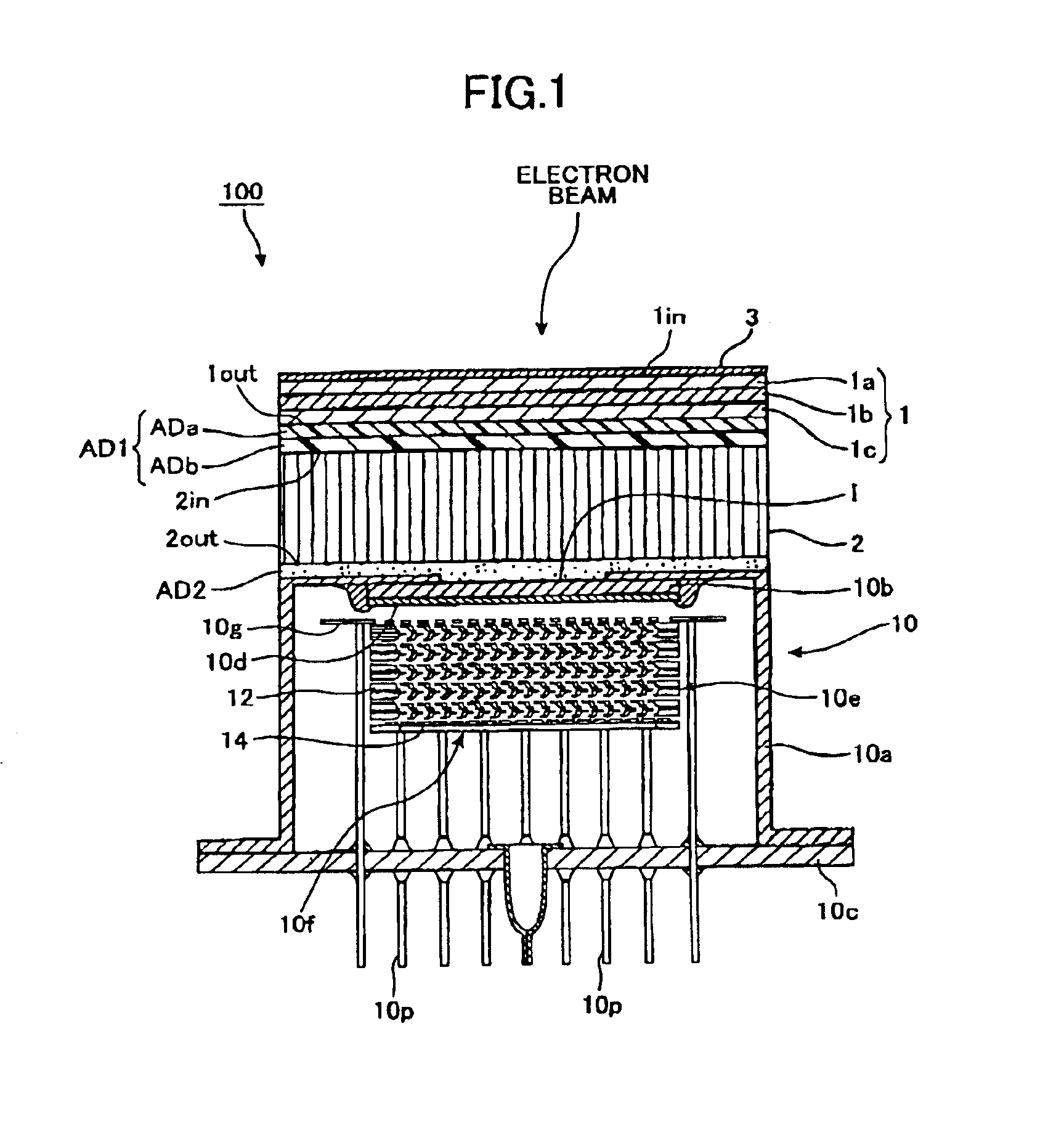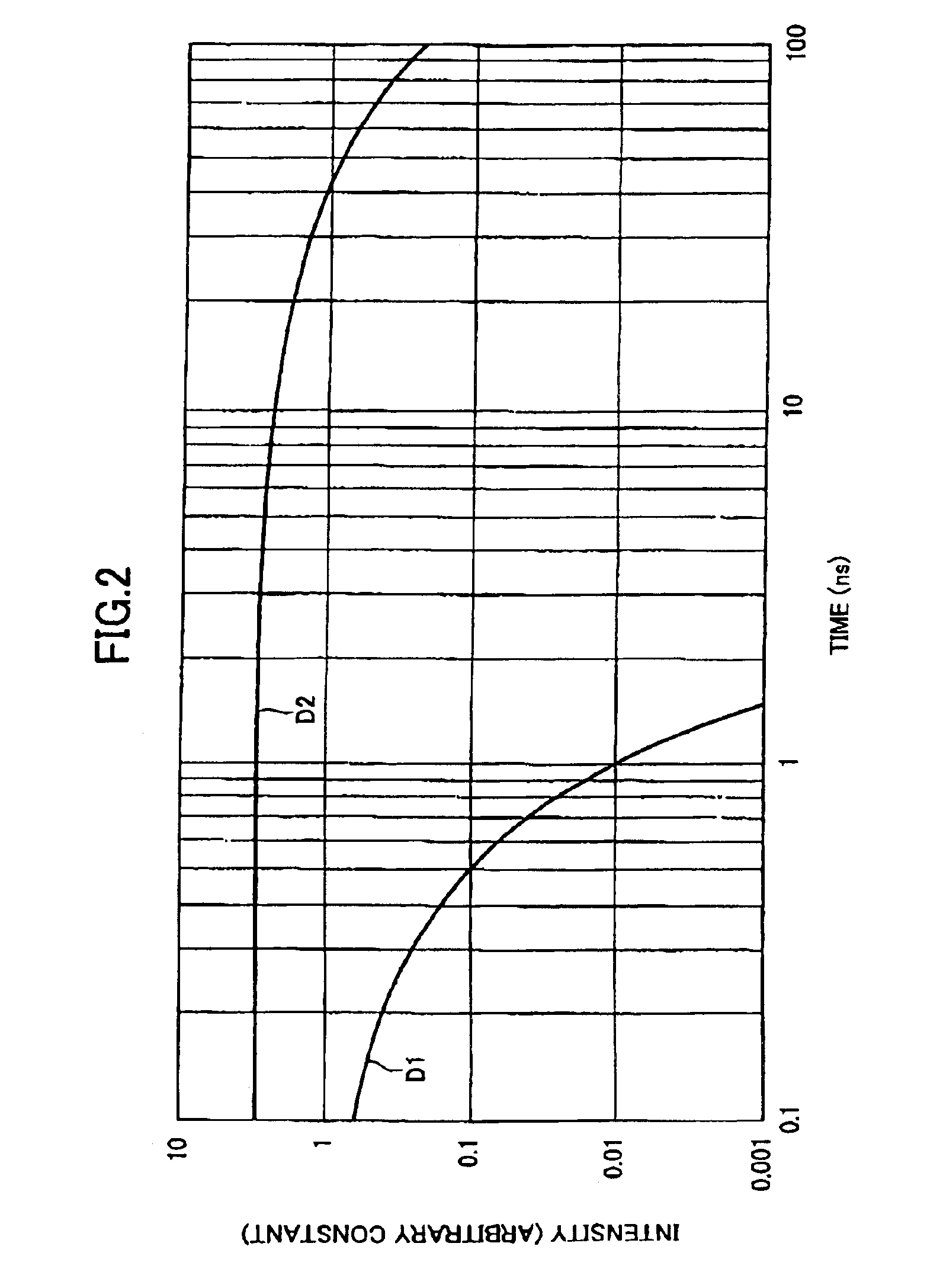Electron beam detector, scanning type electron microscope, mass spectrometer, and ion detector
a scanning electron microscope and detector technology, applied in the direction of material analysis using wave/particle radiation, optical radiation measurement, particle separator tube details, etc., can solve the problem of insufficient response of any of these fluorescent materials, and achieve the effect of preventing the deterioration of these components, good accuracy, and quick respons
- Summary
- Abstract
- Description
- Claims
- Application Information
AI Technical Summary
Benefits of technology
Problems solved by technology
Method used
Image
Examples
first embodiment
FIG. 1 is a vertical cross-sectional view showing an electron beam detector 100 according to a first embodiment.
The electron beam detector 100 has a substantially cylindrical shape and includes a compound semiconductor substrate 1, a light guide 2, and a photomultiplier tube 10 as the photodetector arranged in the axial direction of the electron beam detector 100, these components being formed integrally. The compound semiconductor substrate 1 functions to convert incident electrons into fluorescent light. The photomultiplier tube 10 has a light incident surface I and functions to detect light incident on the light incident surface I. The light guide 2 is an optical member formed of a fluorescent light transmissive material. The light guide 2 is fixed to the light incident surface I of the photomultiplier tube 10. The compound semiconductor substrate 1 is mounted on the light guide 2. In this way, the compound semiconductor substrate 1 is optically coupled with the light incident su...
second embodiment
FIG. 7 is a vertical cross-sectional view showing the electron beam detector 100 according to a second embodiment. The electron beam detector 100 of the present embodiment differs from that of the first embodiment only in that the compound semiconductor substrate 1 of the present embodiment includes only the substrate layer 1c formed of an AlGaAsP compound semiconductor material and the light-emitting layer 1b formed of a GaAsP compound semiconductor material that is formed on the substrate layer 1c.
The GaAsP compound semiconductor material is a single crystal that generates fluorescent light in response to incident electron beams. The wavelength of light emitted from the GaAsP is 720 nm. As in the first variation of the first embodiment, the compound semiconductor substrate 1 of the present embodiment does not include the coating layer 1a, and the metal layer 3 is provided directly on the light-emitting layer 1b. Therefore, the surface of the light-emitting layer 1b (the top surfa...
third embodiment
FIG. 9 is a vertical cross-sectional view showing the electron beam detector 100 according to a third embodiment. The electron beam detector 100 of the present embodiment differs from that of the first embodiment only in that the adhesive layer AD1 is constructed of a single layer formed of a fluorescent light transmissive adhesive (synthetic resin) rather than two layers. The adhesive layer AD1 having this single-layer construction affixes the compound semiconductor substrate 1 to the light guide 2. With this construction, the compound semiconductor substrate 1 and light guide 2 can be connected with sufficient strength. Further, sufficient good response can be achieved.
PUM
| Property | Measurement | Unit |
|---|---|---|
| carrier concentration | aaaaa | aaaaa |
| wavelength | aaaaa | aaaaa |
| thickness | aaaaa | aaaaa |
Abstract
Description
Claims
Application Information
 Login to View More
Login to View More - R&D
- Intellectual Property
- Life Sciences
- Materials
- Tech Scout
- Unparalleled Data Quality
- Higher Quality Content
- 60% Fewer Hallucinations
Browse by: Latest US Patents, China's latest patents, Technical Efficacy Thesaurus, Application Domain, Technology Topic, Popular Technical Reports.
© 2025 PatSnap. All rights reserved.Legal|Privacy policy|Modern Slavery Act Transparency Statement|Sitemap|About US| Contact US: help@patsnap.com



